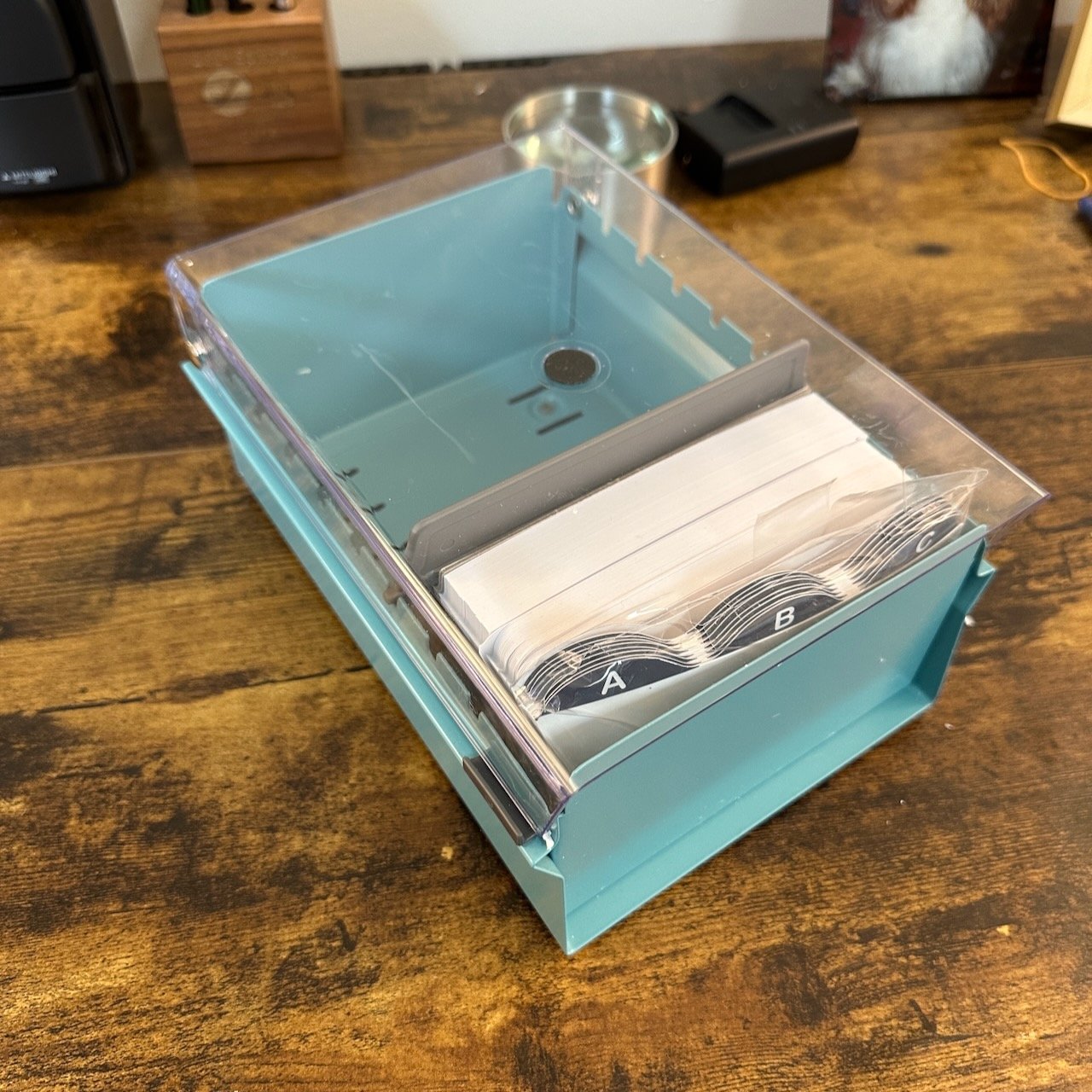One thing I’ve struggled with in my notetaking system over the years is organizing and managing information for longer-term use. Sure, if my notes are immediately incorporated into a larger piece of work, like a blog post or a legal brief, this isn’t much of an issue because I typically won’t keep the raw notes and will just discard them when I’m done with the project. But what about those stray thoughts and ideas that I write down not necessarily for immediate, or even intermediate-term, use? An idea for a post or product or book that I might not get around to writing for a year or more? I’m sure that I have dozens of such ideas and stray thoughts buried in old journals and notebooks, but they’re not easily accessible, much less organized by topic or in any other useful way. Lately I’ve been preoccupied with creating a filing system for this type of information with minimal structure that doesn’t take too much time to maintain.
Some pocket notebooks from years past. Some are VERY old.
As I hinted at in my post earlier this year discussing my planner setup for 2025, I’m renewing my focus on finding and using the right tool for the job, rather than trying to make everything fit within the confines of a single system, like I tried last year with Hobonichi. So what’s the solution here? I spent some time over the holidays sorting through my personal “archive” of old notebooks, and honestly when I felt the most “organized” (relatively speaking) was when I consistently carried a 3x5 pocket notebook to collect the random stuff. It wasn’t a perfect solution, but when I finished each notebook, I was in the habit of quickly flipping through and extracting the important ideas from the shopping lists and other miscellany, and either transcribing it somewhere else, tearing out the page and photographing or scanning it, or simply writing up a quick index at the back to highlight the best bits and then filing the entire notebook away.
These are good perforations. They’re sturdy enough to hold together in the notebook, while still allowing you to remove pages cleanly. (The paper is what I would call “decently” fountain pen friendly, and very good for Field Notes.) I’m also considering testing some of the Maruman Mnemosyne A7 and B7 pads, which also have perforated pages and will have more fountain pen friendly paper.
I started considering a return to pocket notebooks when I saw that the latest Field Notes special edition (“Vintage”) featured perforated pages that are about the same size as a 3x5 index card when detached. I’ve also been using more index cards in general, and have begun carrying them around in my bag because I like being able to sketch out thoughts and ideas while visually rearranging the cards. I’ve had mixed luck with index cards, in terms of finding ones that can handle all the various types of pens and pencils that I use, but recently I’ve been very impressed with two brands: Levenger (a classic) and a new brand called Notsu, which makes very ink friendly dot grid index cards as well as some foldable “To Do” format cards.
The Notsu “Centre Rise” is a product I’m testing out. It’s a combination card case and stand that fits together magnetically and ships with dividers you can use for a mini filing system. I’ve been carrying this one around in my briefcase, and made a small-ish test order for the shop. You will likely see a separate post on the system itself.
A few weeks back I went on Amazon and purchased a 3x5 index card file box with dividers, which I’ve since been using to collect and organize not just index cards but torn out pages from Field Notes, old sticky notes and small slips of paper, Plotter cards and Mini 5 sheets and more. I’m still working on how broadly/specifically to organize topics and ideas, but I’m liking how the project is taking shape.
Isn’t This a Use Case for Digital Software?
Maybe for some people, but I’ve tried using tools like Evernote, Devonthink, and Tinderbox over the years, and for me, each of them adds another layer of complexity and digital work (mainly tagging files with hashtags) in order to make the system usable. It also requires you to regularly go back through your notebooks and journals and physically transcribe or type information. I end up spending more time tinkering with the software than actually writing. While some might find my system archaic (though probably not readers of this blog), I vastly prefer a simple physical filing system, though it does require a periodic review to keep it relevant and useful.
One thing I like about this Notsu card case - separate and apart from the “stand” functionality - is that it closes up into a fairly compact, sturdy box that slips easily into your bag for taking notecards on the go. (It fits any 3x5 cards, not just the Notsu brand.)
I’m also becoming more interested in index cards and how people use them. Do we have any other index card fans out there? I’ve read many articles on how professional writers - and particularly writers of nonfiction - use index cards to organize research and ideas, though these systems can get pretty elaborate and span multiple boxes of cards. Personally, I’d love to keep just the single card file for storage, and regularly prune it back by discarding those ideas that don’t turn into anything that I’d ever use. Stay tuned!
Thank you for reading! The Gentleman Stationer is supported by the T.G.S. Curated Shop and the T.G.S. Patreon Program. If you’d like to visit our in-person location, you can view directions and up-to-date hours here.


